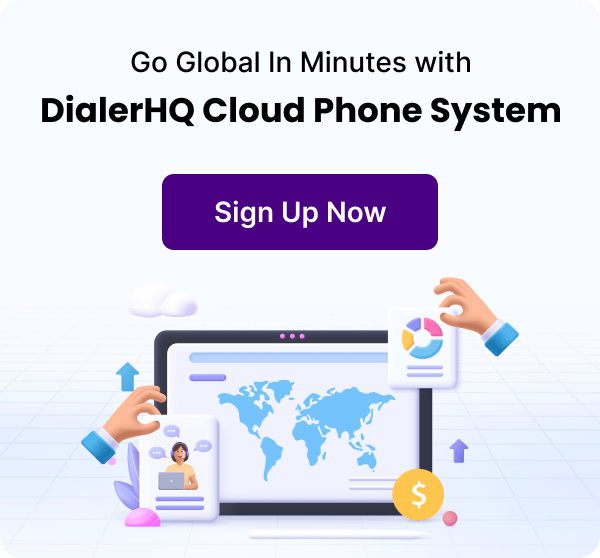Senior Writer: Paras Kela
In the digital era, online communication revolutionizes global connections, making interactions across the globe instantaneous and efficient. Utilizing platforms like emails, social media, and instant messaging transcends geographical barriers.
Interestingly, about 70% of employees actually feel less stressed during virtual meetings compared to face-to-face ones. It really highlights how online communication is changing the game in both personal and professional connections.
People seem to prefer the virtual setup, finding it more convenient and accessible. Plus, it’s a stress-buster, offering a welcome break from the usual tensions linked to in-person meetings. So, it’s not just about the technology; it’s about making our interactions more comfortable and adaptable to our modern, fast-paced lives.
Organizations can enjoy the advantages of real-time interactions, cost-effective communication, and a diverse range of modes to stay ahead in the dynamic digital landscape. Businesses can optimize online communication with DialerHQ's innovative features for seamless connectivity and efficient collaboration.
What is Online Communication?
Online communication encompasses any exchange of information or messages between people over the internet. It ranges from emails, social media interactions, forums, and video calls to collaborative workspaces. This digital dialogue has become integral to personal, educational, and professional environments, offering a versatile medium for diverse forms of interaction.
10 Advantages of Online Communication
Discover the advantages of Internet communication, revolutionizing global interactions with its efficiency, accessibility, and diverse capabilities.

1. Global Reach
Global reach is one of the key benefits of online communication. It has transformed the way we connect, enabling instant interactions across continents. This facet of digital communication eradicates traditional geographical barriers, allowing individuals, businesses, and organizations to engage with a worldwide audience effortlessly and cultivate customer loyalty.
It facilitates not just personal connections across borders but also international business operations, educational exchanges, and cultural sharing. The ability to reach out and connect with anyone, anywhere, anytime, has democratized information flow, fostered global networks, and opened up myriad opportunities for collaboration and understanding across diverse cultures.
2. 24/7 Availability
The 24/7 availability of online communication tools ensures that people can connect, collaborate, and access information anytime, breaking free from the constraints of traditional office hours and time zones. This round-the-clock access enhances flexibility, allowing individuals to communicate and work according to their personal schedules and global business needs.
It’s particularly beneficial for international teams and operations, enabling continuous progress on projects and immediate response to any arising issues. This ever-present nature of online communication supports a world where the clock does not bind opportunities and interactions.
3. Cost Reduction
Cost reduction is one of the pivotal advantages of online communication, eliminating the financial burdens associated with traditional communication methods. By diminishing reliance on physical mail and mitigating travel expenses for meetings, it offers significant economic benefits for individuals and businesses alike.

The ability to share information, conduct meetings, and collaborate globally at minimal or no cost contributes to streamlined operations and increased financial efficiency. Digital communications democratizes access to information, making it an economically viable and inclusive means of interaction, fostering connectivity without substantial financial implications.
4. Instant Feedback
Instant feedback is a hallmark of online communication, allowing real-time responses and interactions. Unlike traditional methods, where feedback may be delayed, online platforms facilitate immediate communication, enhancing efficiency and collaboration. This prompt exchange is particularly valuable in professional settings, accelerating decision-making processes, problem-solving, and creative collaboration.
Whether in business negotiations or personal conversations, the ability to receive instant feedback fosters dynamic and agile communication, enabling quick adjustments and maintaining a responsive and engaged digital environment.
5. Enhanced Flexibility
Enhanced flexibility is a key attribute of online communication, granting individuals the freedom to connect and collaborate from anywhere with internet connection. This adaptability transcends physical boundaries, facilitating remote work, virtual meetings, and personalized interactions. Online communication allows people to manage their time effectively, fostering a work-life balance that suits individual preferences.
This flexibility is instrumental in the modern digital landscape. It empowers individuals to communicate, learn, and engage in various activities according to their schedules and preferences, ultimately enhancing overall efficiency and satisfaction.
6. Diverse Modes of Communication
Diverse modes of communication in the online realm offer a spectrum of options to suit varied needs. From text-based messaging and emails to video calls and social media interactions, the digital landscape provides a rich tapestry of communication formats. This diversity accommodates different communication styles and preferences, catering to both personal and professional interactions.

Whether conveying formal information, engaging in casual conversations, or collaborating on projects, the range of online communication modes ensures a versatile and comprehensive platform, making it a one of the major online communication benefits.
7. Ease of Dissemination
Ease of dissemination characterizes online communication as an efficient and rapid means to share information with a broad audience. Unlike traditional methods, where distribution might be time-consuming, online platforms enable instant broadcasting of messages, announcements, or content.
This streamlined sharing process benefits businesses, individuals, and organizations, enhancing visibility and engagement. Whether spreading news, promoting products, or raising awareness, the ease of dissemination through online communication amplifies the impact and reach of messages, making it a powerful tool for effective communication strategies.
8. Accessibility for the Disabled
Online communication systems play a pivotal role in enhancing accessibility for individuals with disabilities. The digital landscape provides various tools, such as text-based communication and voice recognition software, empowering those with diverse needs to participate more fully in online interactions.
This inclusive approach breaks down traditional communication barriers, enabling people with disabilities to engage effectively in social, educational, and professional activities.
The internet’s accessibility features contribute to creating a more equitable and inclusive online environment, ensuring that everyone, regardless of ability, can participate in digital communication seamlessly.
9. Educational Opportunities
The internet has revolutionized education by providing access to a wealth of knowledge and learning resources. Online courses, virtual classrooms, and educational apps make learning more accessible, flexible, and tailored to individual needs.

This democratization of education allows people from all backgrounds to learn new skills, pursue degrees, and engage in lifelong learning
10. Cultural Exchange
Cultural exchange thrives through online communication by connecting individuals worldwide, fostering a global exchange of ideas, traditions, and perspectives. Online platforms facilitate seamless interactions, enabling people to share their cultures, languages, and experiences.
This interconnectedness promotes mutual understanding, tolerance, and appreciation for diversity. From virtual events to social media discussions, the internet serves as a bridge between different cultures, breaking down physical communication and geographical barriers and creating a shared digital space where individuals can engage in cross-cultural dialogue, ultimately contributing to a more interconnected and harmonious global community.
Conclusion
Incorporating these aspects, it’s evident that the advantages of online communication are transformative, offering unparalleled benefits that cater to the evolving needs of society. The integration of these digital communication methods into daily life underscores their significance in fostering connections, enhancing productivity, and bridging cultural gaps.
Frequently Asked Questions
Online communication is used for a wide array of purposes, including virtual meeting, personal interactions, professional collaboration, educational pursuits, and access to information, making it a versatile tool in the digital age.
Examples include email, social media platforms (like Facebook, Twitter, and Instagram), instant messaging apps (such as WhatsApp and Telegram), traditional phone conferencing system like video conferencing tools (like Zoom and Skype), and collaborative workspaces (such as Slack and Microsoft Teams).
Online communication refers to the exchange of information and messages over the Internet through various digital conferencing platforms and mediums, offering a flexible, cost-effective, and efficient way to interact across distances.
Email is often considered the most common form of online communication for professional and formal interactions, while instant messaging and social media are prevalent for personal and casual exchanges.

Paras Kela is an accomplished IT professional with 7+ years of industry experience, including 4+ years as a dedicated content writer. His expertise lies in crafting informative blogs on VoIP and cloud telephony, among other technical subjects. Outside his professional pursuits, he cherishes quality time with loved ones, indulges in watching documentaries, and finds solace in gardening.
Updated : February 20, 2024

Subscribe to our newsletter & never miss our latest news and promotions.





